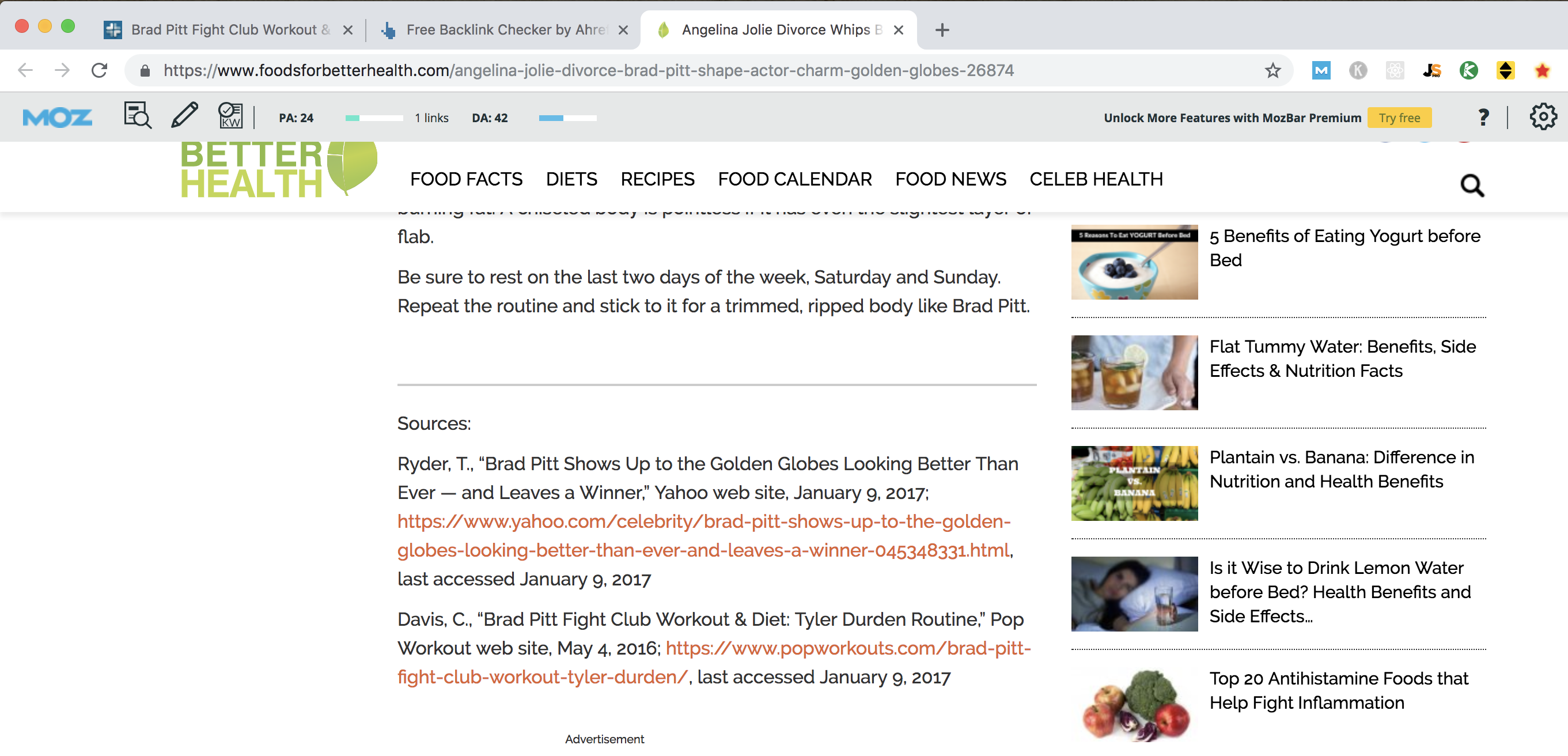- Joined
- Jul 28, 2022
- Messages
- 206
- Reaction score
- 29
- Points
- 110
Keyword research is widely considered the cornerstone of SEO, and I couldn't agree more. A solid keyword research strategy can give you a significant advantage in the battle for search engine rankings. However, relying solely on third-party metrics provided by keyword research tools when analyzing competition has some drawbacks.
Firstly, keyword difficulty scores provided by these tools may be misleading, as your competitors may be using private blog network (PBN) links to boost their rankings. Secondly, these tools cannot perform accurate backlink profile analysis or show how strong a link profile actually is unless they analyze authority websites. Even the most experienced SEOs avoid fighting authority websites head-on unless their website or client's website is also an authority site.
Another issue is that some keywords may appear easy to rank for because your competitors may be blocking crawlers and hiding their PBN links from third-party crawlers such as Moz, Majestic, and Ahrefs. Therefore, it's essential to develop your intuition for analyzing competition instead of relying solely on keyword difficulty scores.
As an SEO, your goal should be to exploit niches that have not yet been tapped by other SEOs or are dominated by weak sites. If you find such a keyword, you've struck gold, and you'll be able to rank without spending a lot of money. This guide will show you how to properly analyze your SEO competition step by step, but first, you'll need some basic tools. All of these tools can be used for free with minimal restrictions, and you'll need Google Chrome to use most of them. If you don't already have Chrome installed, do so before proceeding further.
Here is the list of tools we'll be using in this guide.
Moz, Majestic, and Ahrefs are three popular SEO tools that are commonly used for keyword research and competitor analysis.
To use Moz for competitor analysis, you'll need to install the Mozbar plugin. If you're new to this, here's how you can do it:
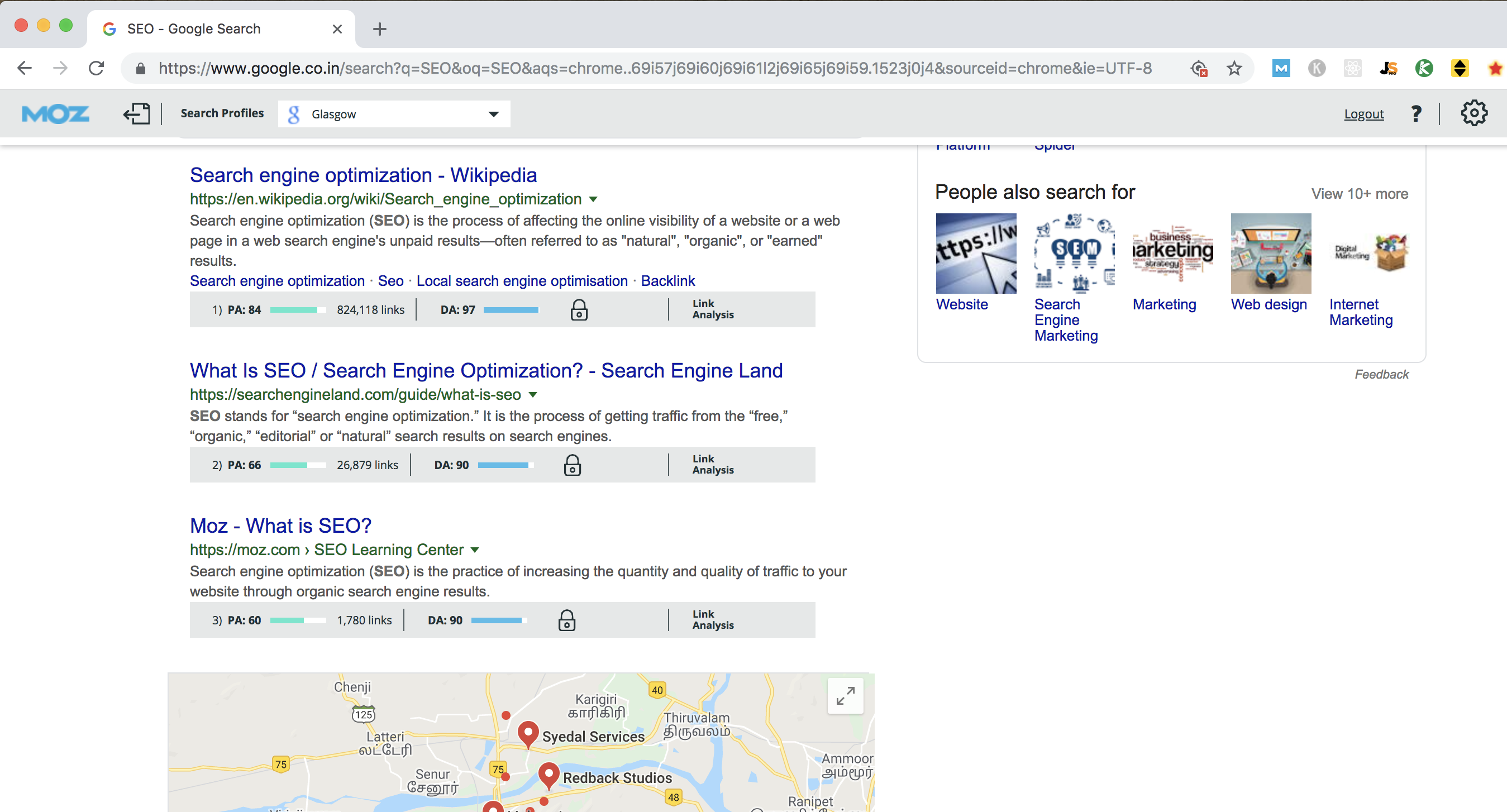
Another tool that we can use for competitor analysis is the Majestic Backlink Analyzer plugin. However, we'll only use it to obtain some metrics.
To get started, follow these steps:
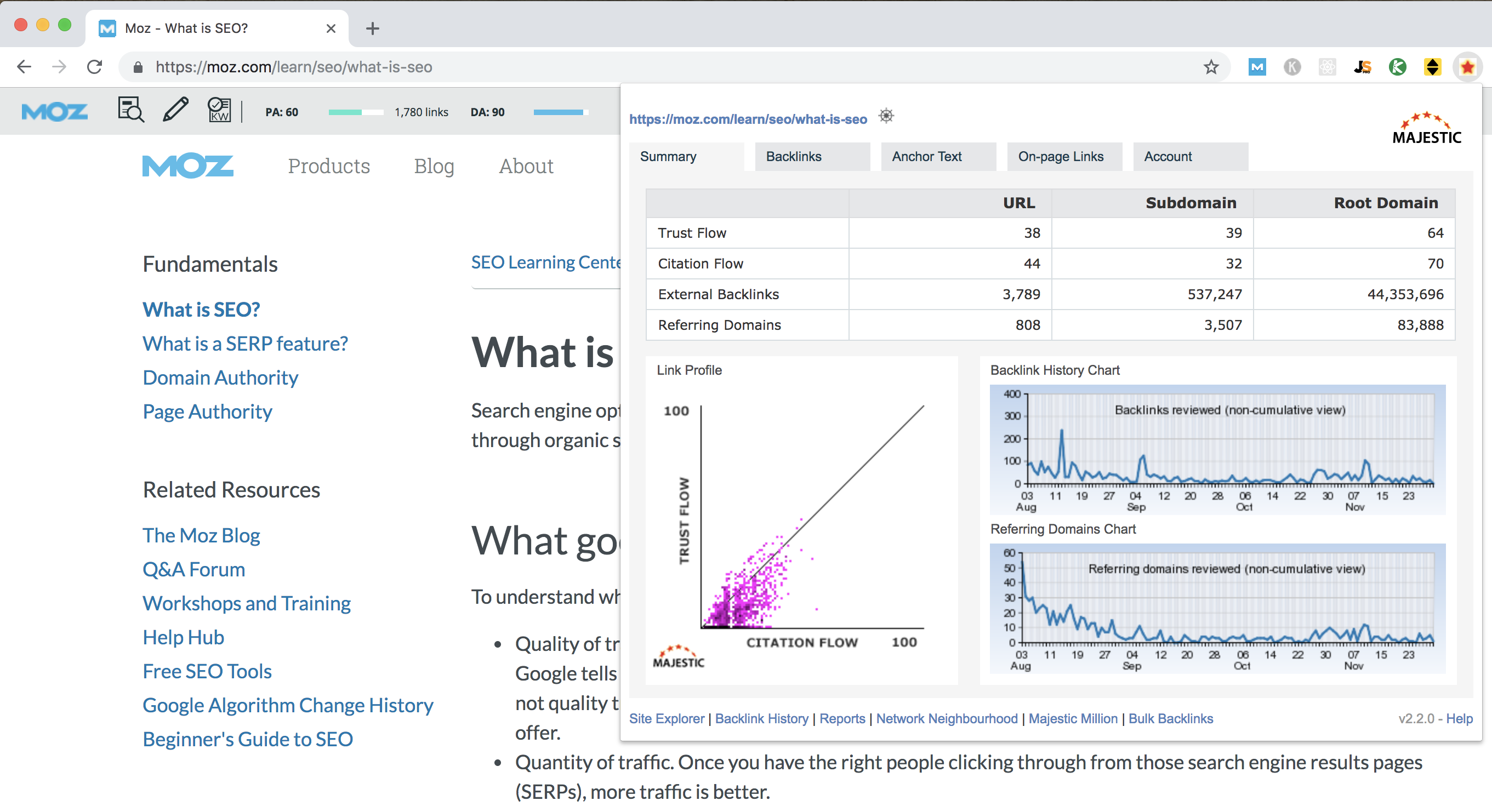
To determine the difficulty of a keyword, we will use the following classification:
To analyze our competition, we will consider the following factors:
We'll begin with a "Very Easy" keyword example: "How to kill a cat." Please note that this keyword is used for example purposes only, and we have nothing against cats. The reason we chose this keyword is that it's unlikely that anyone would optimize their website for it.

Upon closer examination, the top search results do not appear to be optimized for our target keyword. There is no exact match in the URL, title, meta, or H1 tags. If you have a keyword that has similar competition but a reasonable search volume, it can be classified as a Very Easy difficulty keyword. It would be ideal to target such keywords if you wish to easily rank higher.
Another characteristic of such keywords is that they have unoptimized URLs for SEO, such as "http://www.website.com/blahblah.html?q=asdoa3231". If you come across numerous websites with similar URL structures and low on-page optimization, they can be considered Very Easy.
With minimal backlinking and basic on-page optimization, you should be able to rank for such keywords.
Now, let's talk about the 'Easy' keywords. These keywords have some on-page optimization and a weak backlink profile. This suggests that SEOs haven't yet exploited them, and the little optimization that exists is coincidental or done by bloggers who aren't well-versed in SEO but are using SEO plugins for their websites.
For instance, let's take the keyword "Dentist in San Marino."
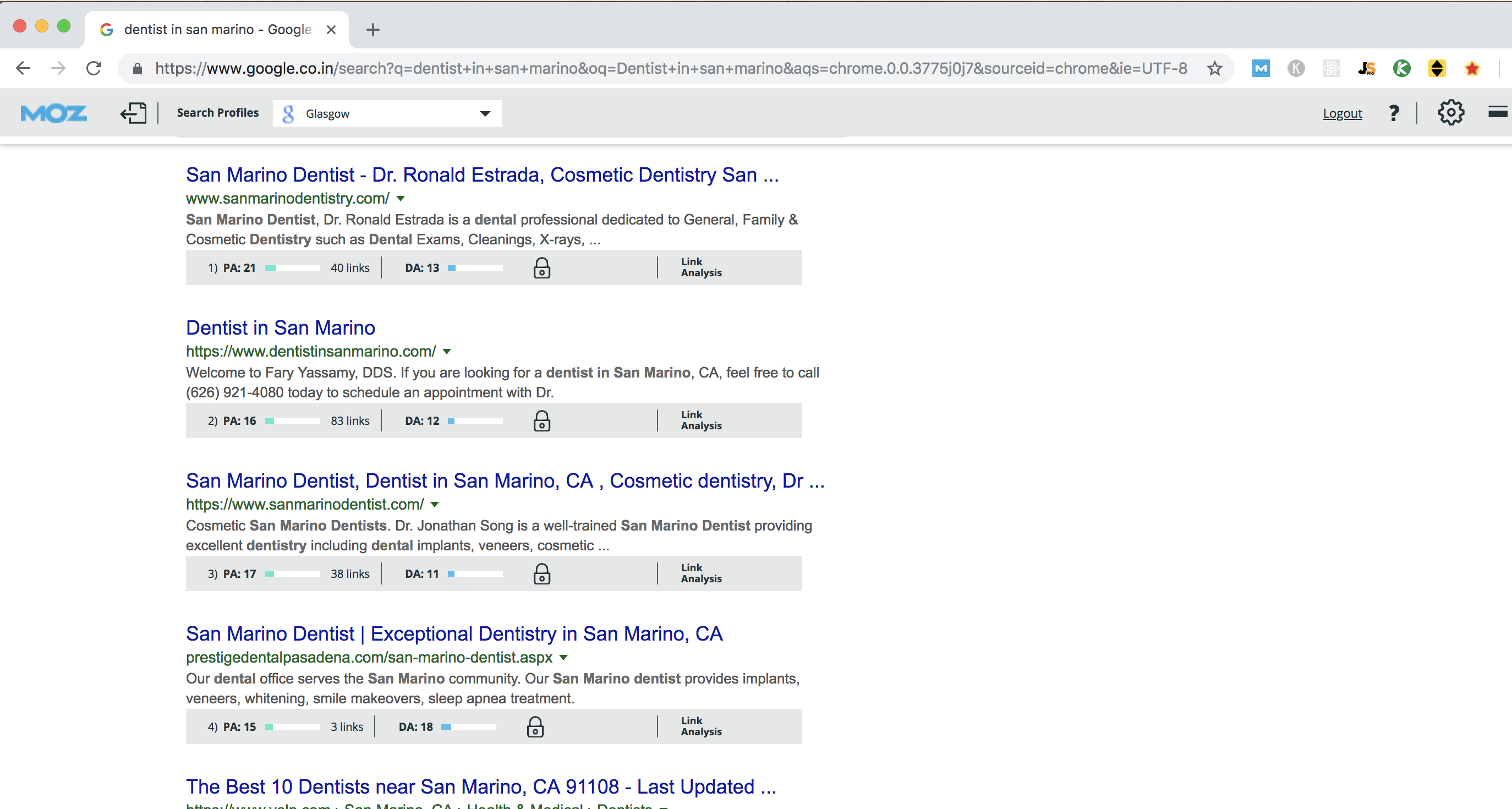
Upon observation, it is apparent that the top search results feature websites with low authority and semi-optimized pages. The first result contains a partially matched keyword and LSI in the URL, as well as the Meta Description. However, the domains aren't particularly robust. This presents a favorable signal for us.
Now, let's delve further and scrutinize the first search result.
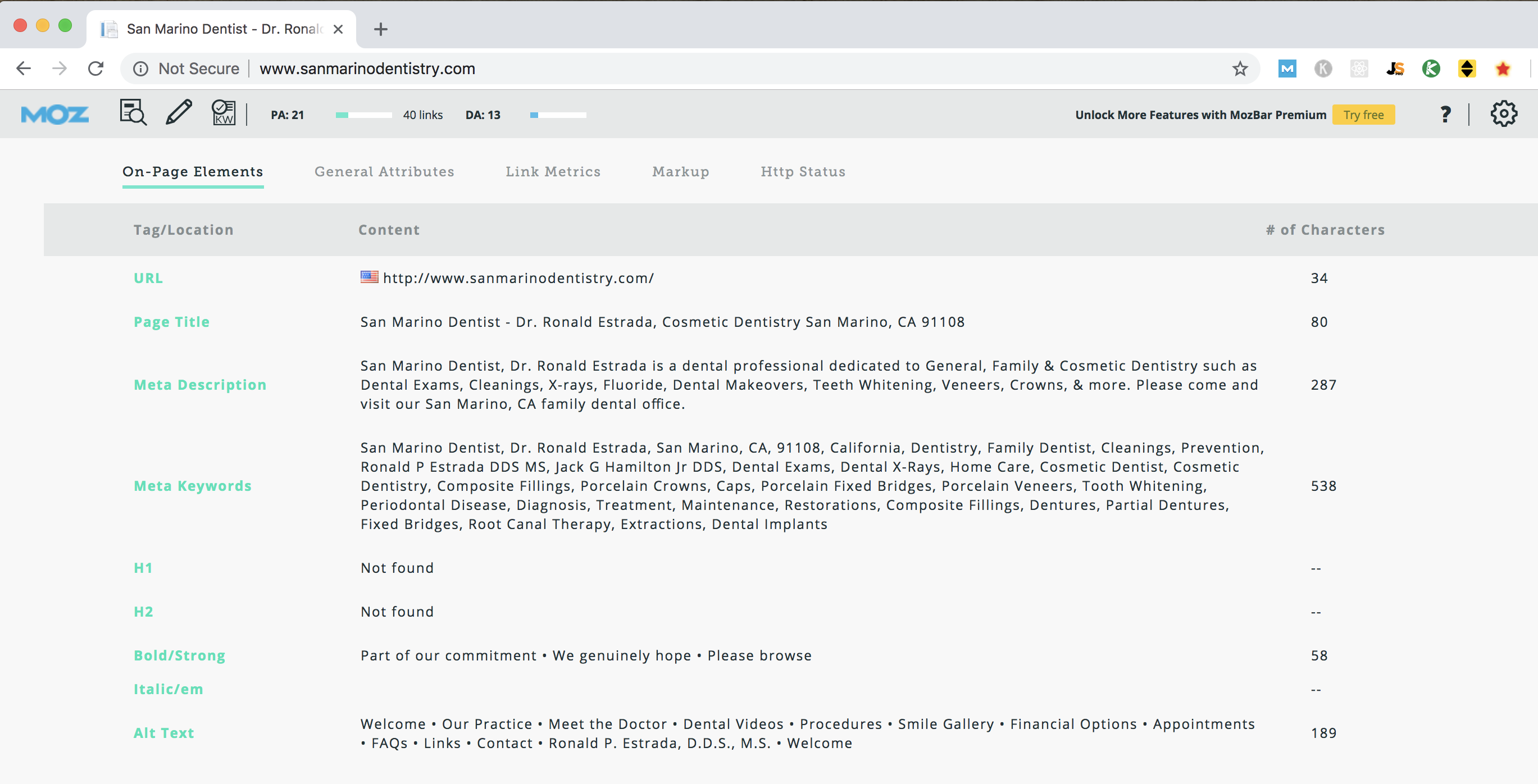
The initial observation to make is that the website lacks HTTPS, which is one of the ranking signals employed by Google. If you select the Page Analysis option located at the upper-right corner of the MozBar, you can view the on-page components of the webpage you are visiting.
Concerning on-page optimization, this website features the following:
Our next course of action is to verify the markup.
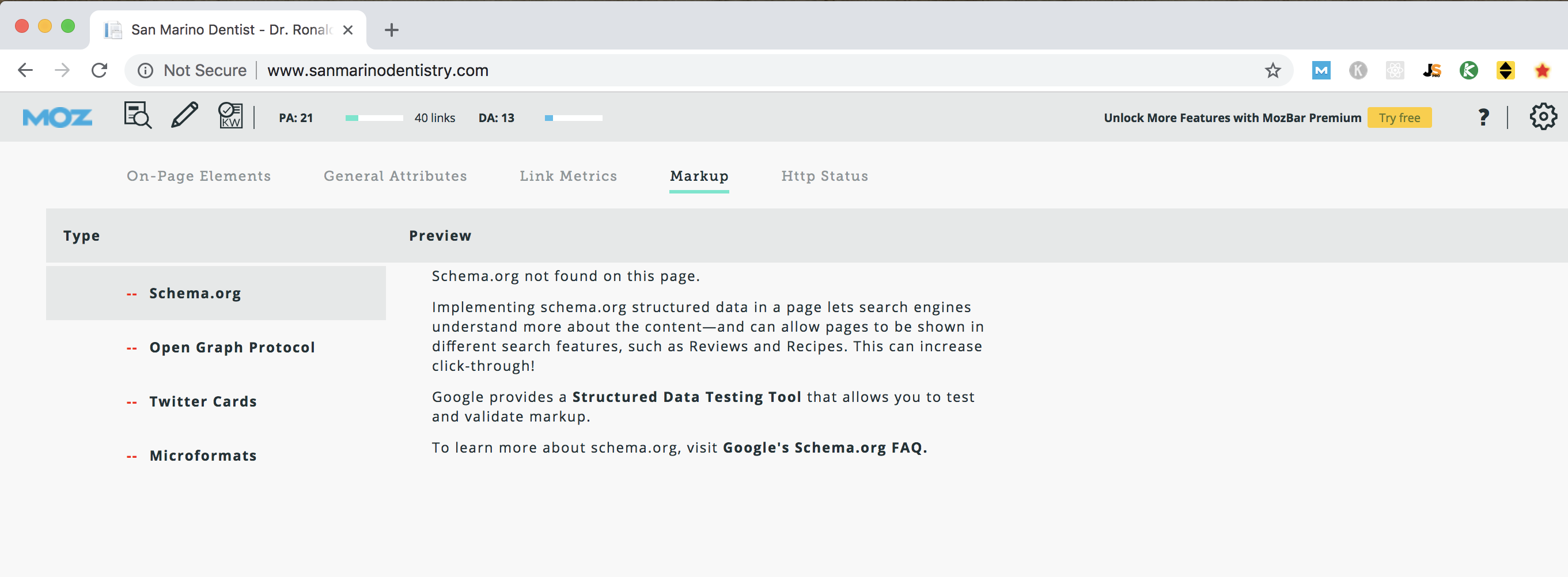
The absence of markup on this website is advantageous for us as we can surpass its ranking by incorporating a straightforward schema.
Next, let's examine the website's backlink profile. Go to https://analytics.moz.com/pro/link-explorer and input the target URL.
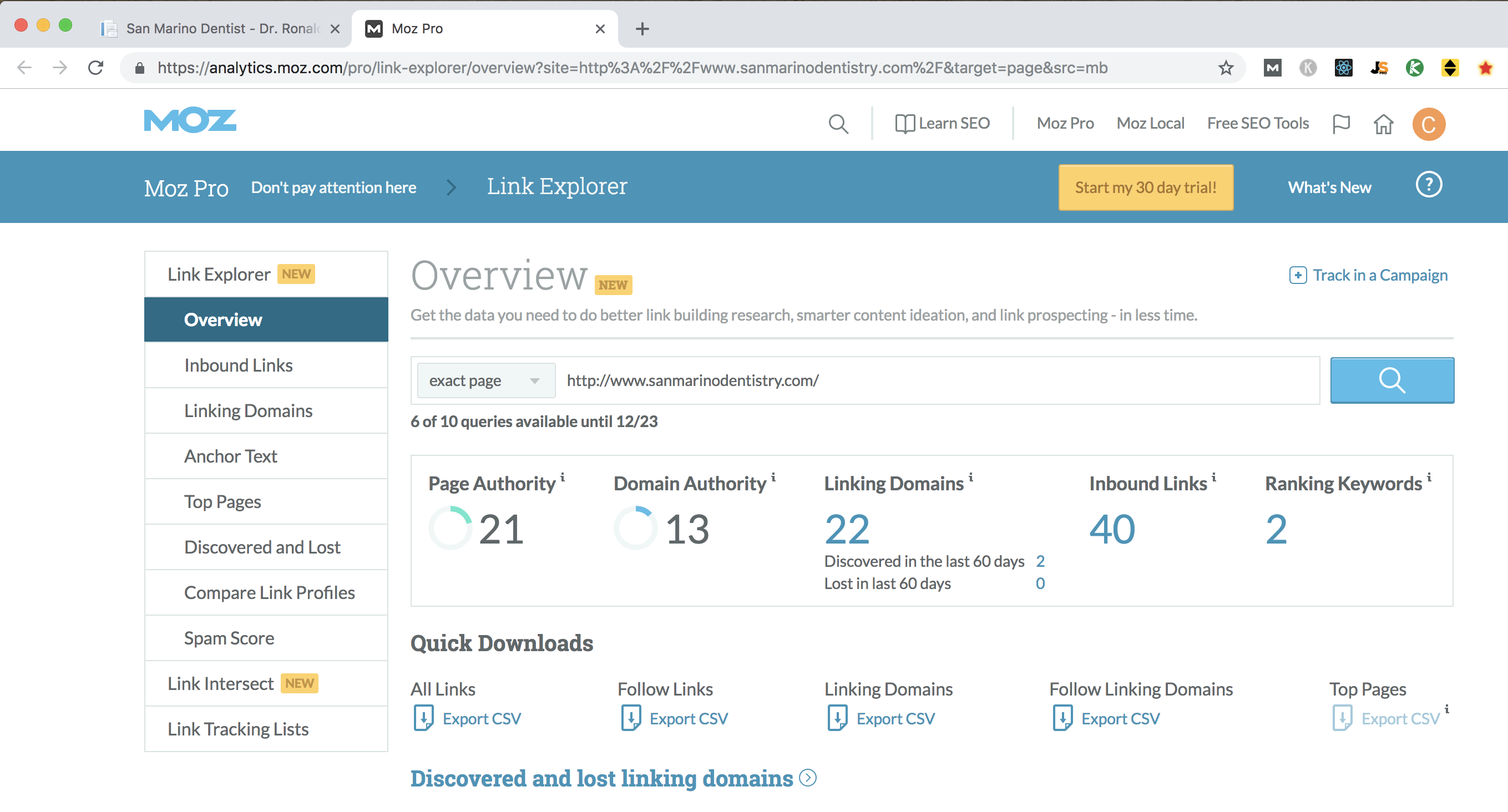
Navigate downwards and select "Top links followed to this website".
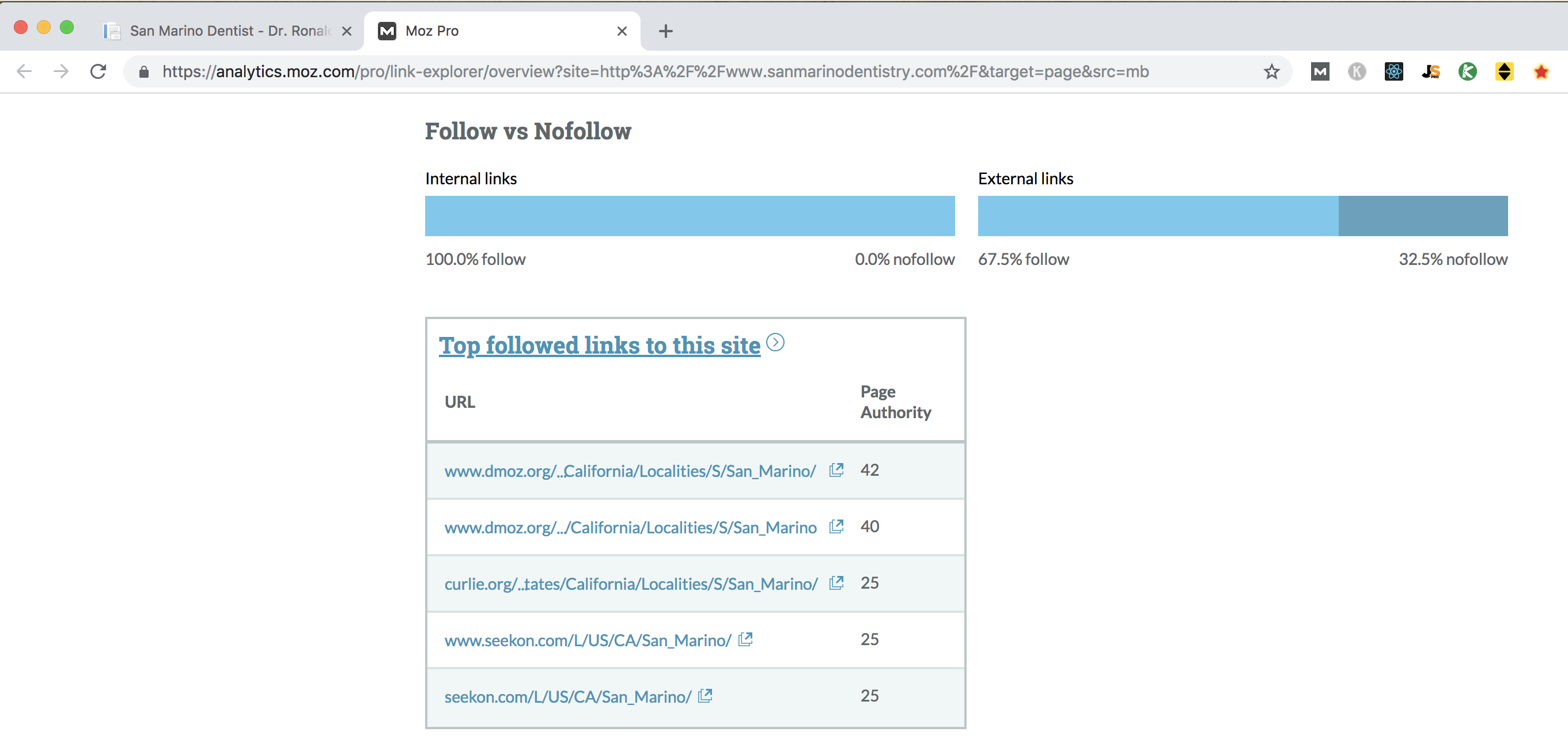
It's apparent that this website predominantly acquires directory backlinks that can be readily replicated. Therefore, you can effortlessly compete with them.
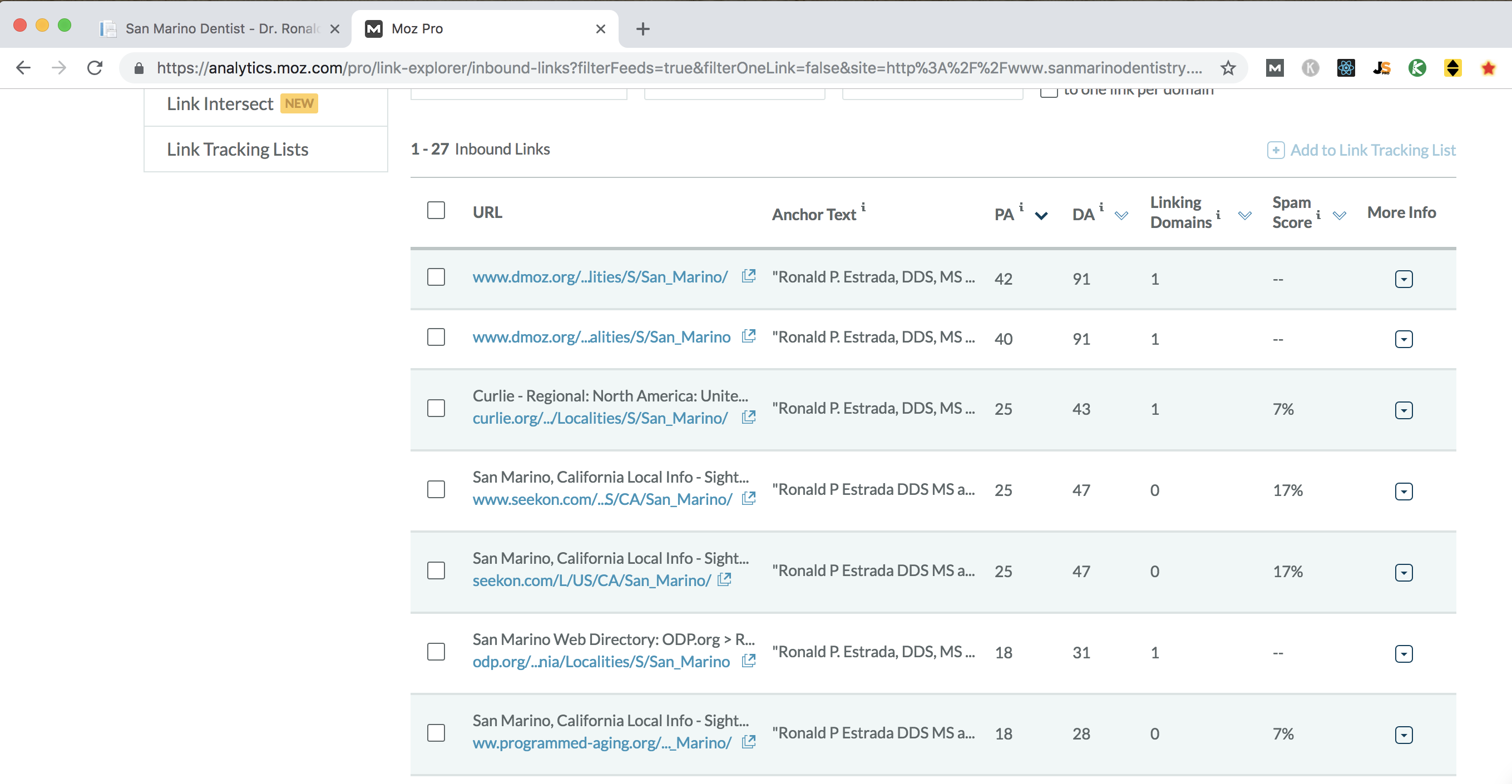
Remember that it's impossible for any third-party crawler, regardless of whether it's paid or free, to display all of a website's backlinks. Hence, it's ideal to use multiple tools for analysis. To uncover more backlinks, we'll use Ahrefs' Free Backlink Checker.
Visit https://ahrefs.com/backlink-checker and input the target URL.

Proceed to verify the strength of the backlinks by following the same process. After that, move on to examining the Flow metrics of the site by accessing the target URL and selecting the Majestic button located on the upper right corner. It is advisable to aim for a 1:1 ratio between Trust Flow (TF) and Citation Flow (CF).

Upon reviewing the metrics of this site, many of you may feel alarmed, but no need to worry as we will delve into reverse engineering the issue shortly. First, let us go over some fundamentals.
The Majestic plugin exhibits TF and CF values for any URL visited, with three columns, including:
As previously mentioned, a desirable backlink profile generally maintains a TF:CF ratio close to 1:1. However, this proportion can occasionally be manipulated.
We will now reverse engineer their flow metrics. Begin by examining each backlink personly and selecting the Majestic plugin to review their flow metrics. Trust Flow only transfers to websites that have a backlink originating from a trustworthy page. I will provide an example to illustrate this concept.
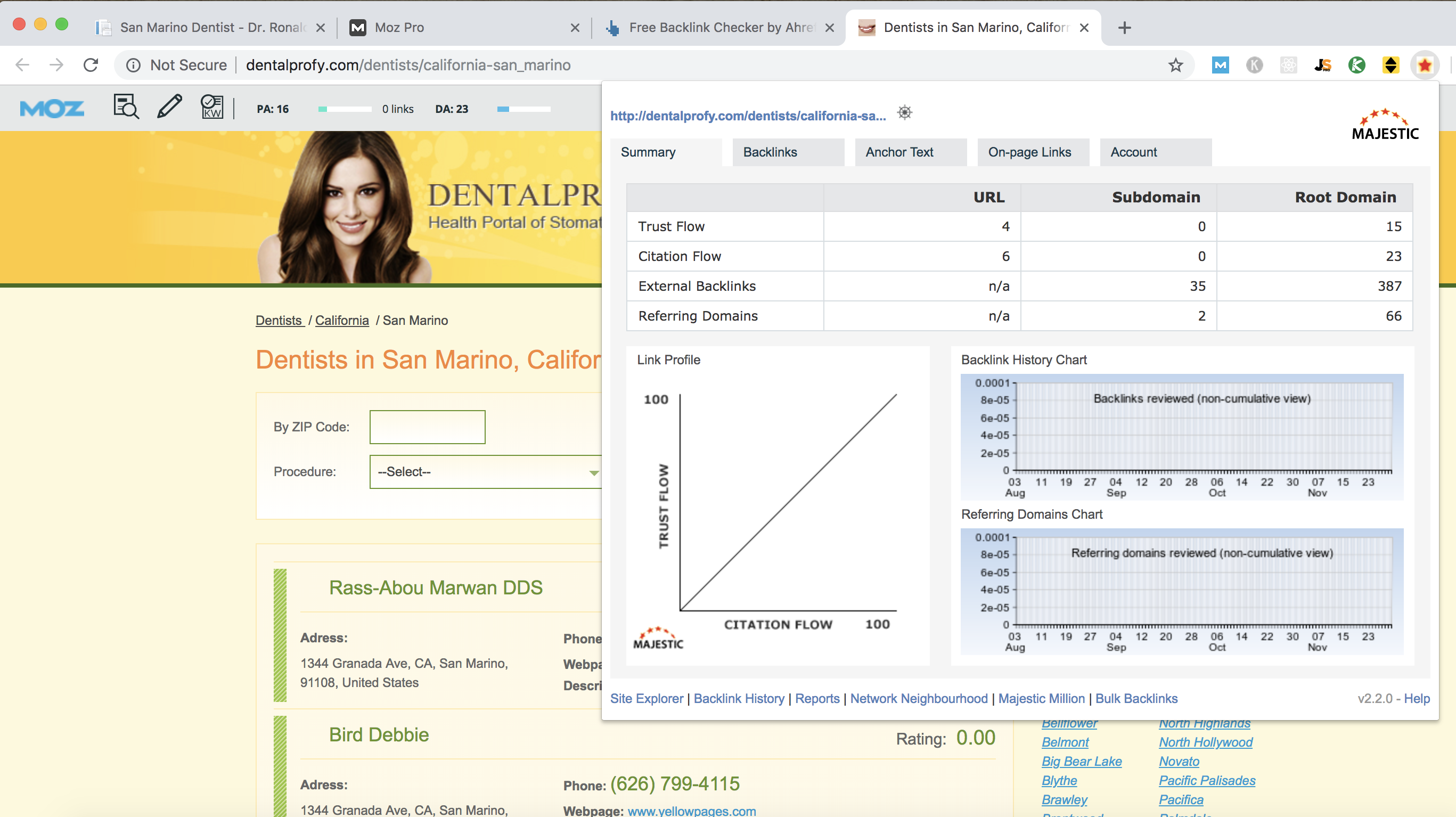
When dealing with a URL, any pages that contain a backlink to this specific URL will receive its Trust Flow value of 4. In contrast, if it were the root domain, a Trust Flow of 15 would be distributed. This explains why homepage links are more robust, especially in PBNs.
To mimic your competitor's Trust Flow, obtain a backlink from this webpage and repeat the process for all backlinks. By doing so, you can collect adequate, filtered backlinks. Alternatively, you could purchase the paid version of Majestic for quicker results, but if you opt not to invest money, you'll need to spend your time and energy.
The manipulation of TF can be further demonstrated by these two websites. Hence, it would be best to use these metrics superficially and not rely solely on them for SEO purposes. Instead, trust your intuition.
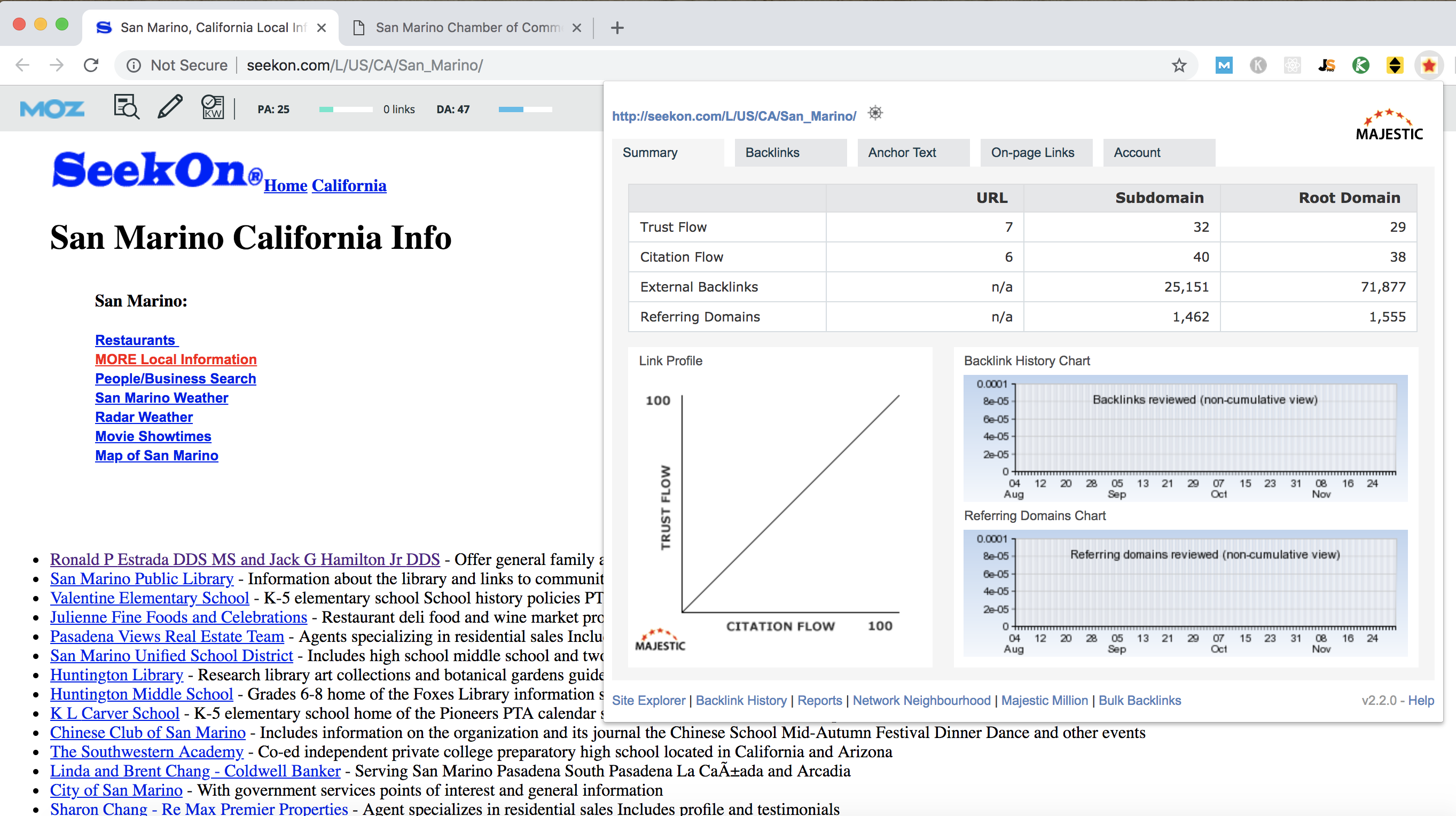

The links provided may not be excellent as they might only attract inexperienced people, and high metrics don't necessarily equate to a direct correlation with PageRank.
Moving on to the 'Medium' difficulty keyword, the websites that rank in the top 10 for these types of keywords typically exhibit the following characteristics:
Let us now examine an example of a 'Medium' difficulty keyword.

The term to focus on is "Brad Pitt workout." The top ten search results demonstrate strong on-page optimization or originate from semi-authoritative websites. To surpass these competitors, a significant investment is necessary. For beginners or those with less experience, I would caution against targeting such keywords.
Upon analyzing the primary website's backlink profile, I discovered a potent guest post. These backlinks carry substantial weight and are challenging to acquire. Moreover, this specific guest post generates some traffic, which presents an additional challenge. Nonetheless, it is possible to create superior links and shift the results in your favor, but you must consider your return on investment.
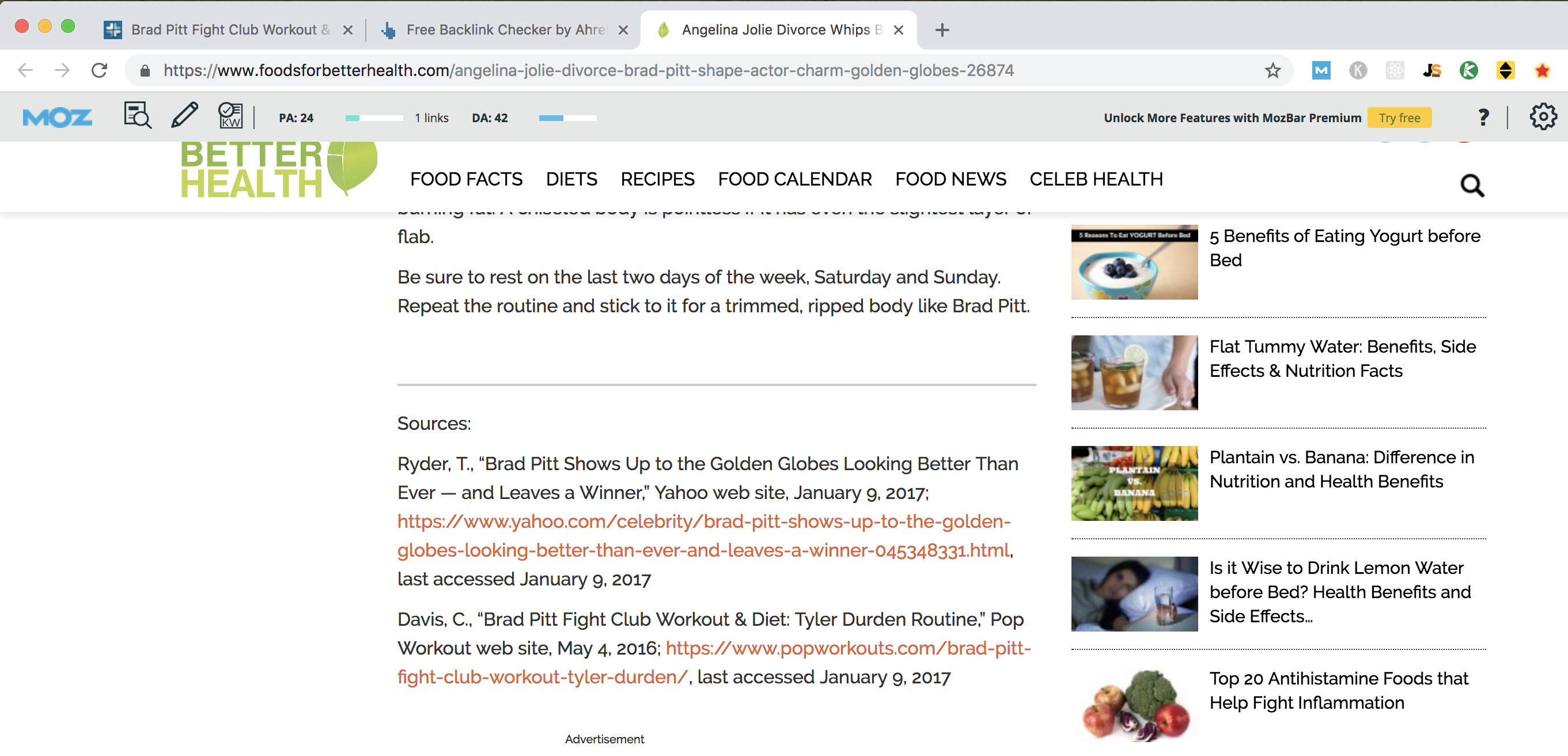
You can replicate the process for the search engine results pages (SERPs) to evaluate the keyword's level of difficulty and respond appropriately.
Next, it's appropriate to tackle the 'Hard' difficulty keywords. Such keywords are often dominated by authoritative websites, as well as a handful of sites boasting influential backlink profiles and strong on-page optimization.
For instance,
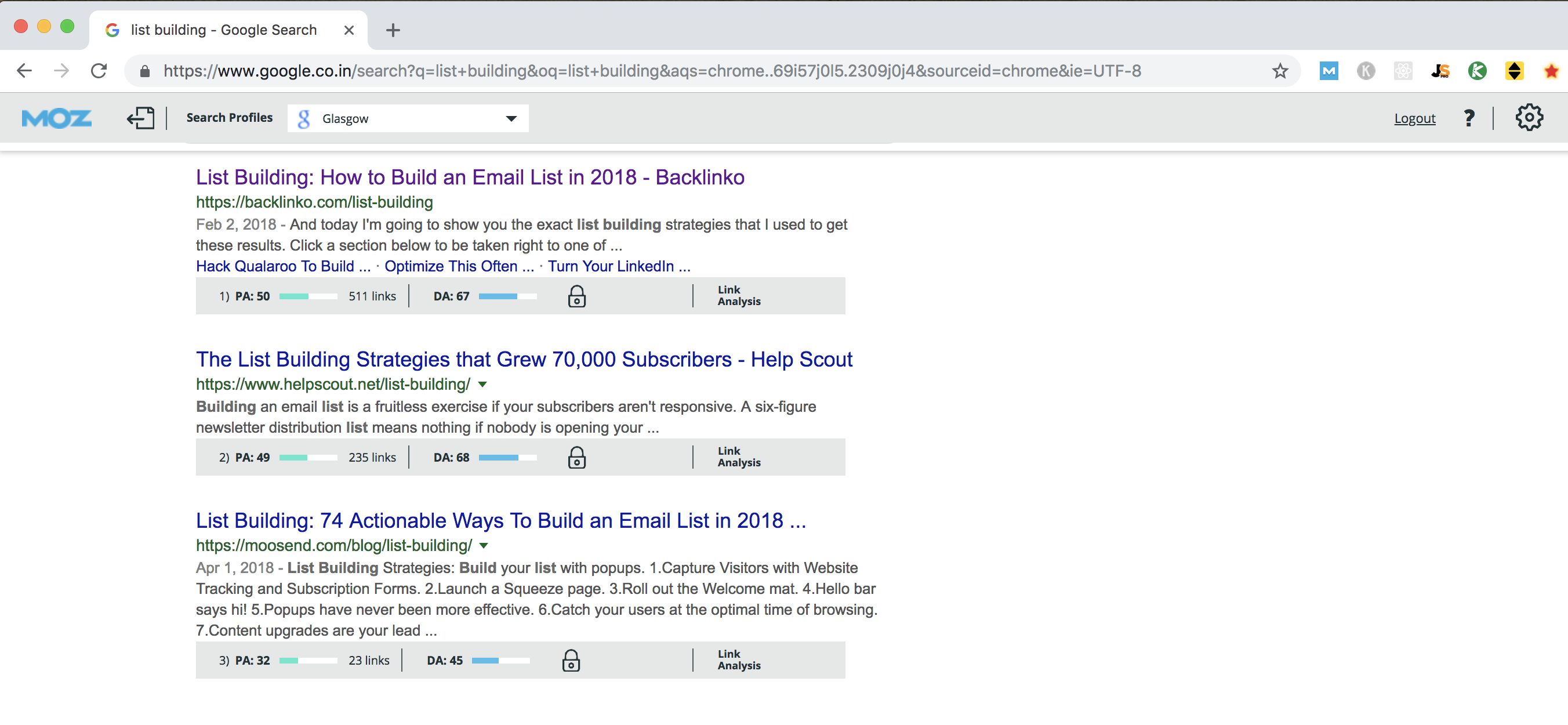
Ranking for these types of keywords is an arduous task. It requires a substantial number of high-quality backlinks to have any hope of surpassing the competition.
Let's examine the top search result.
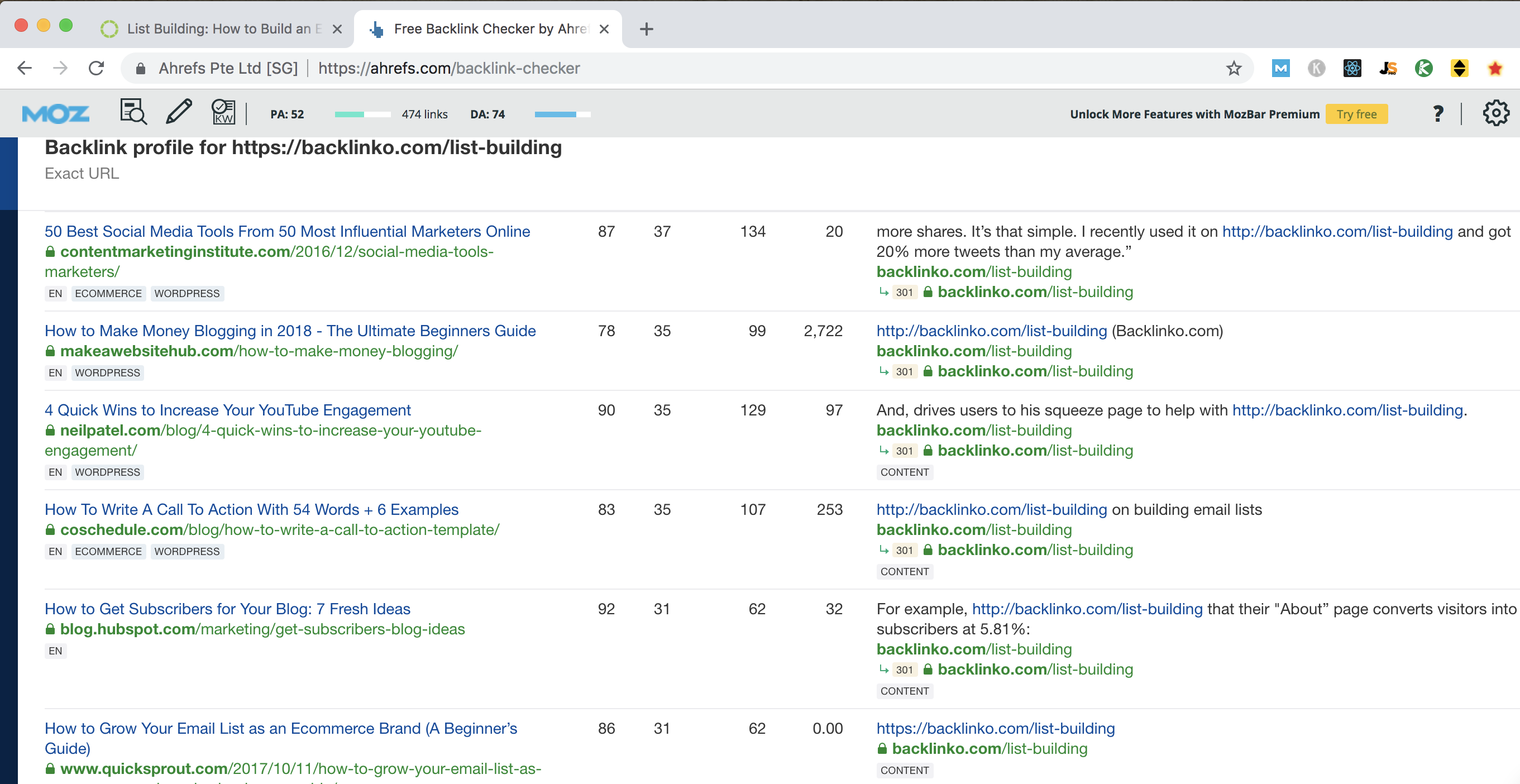
The website occupying the top spot boasts some of the most potent backlinks that one can acquire. These links are contextual, receive high levels of traffic, and originate from authoritative sources. Competing with such backlinks is an immense challenge, unless you resort to a large number of private blog networks (PBNs). However, you must carefully consider your return on investment when using such strategies.
Lastly, let's shift our focus to the most challenging tier of keyword difficulty: the 'Very Hard' keywords.
Without further ado, let's take a closer look at an example.
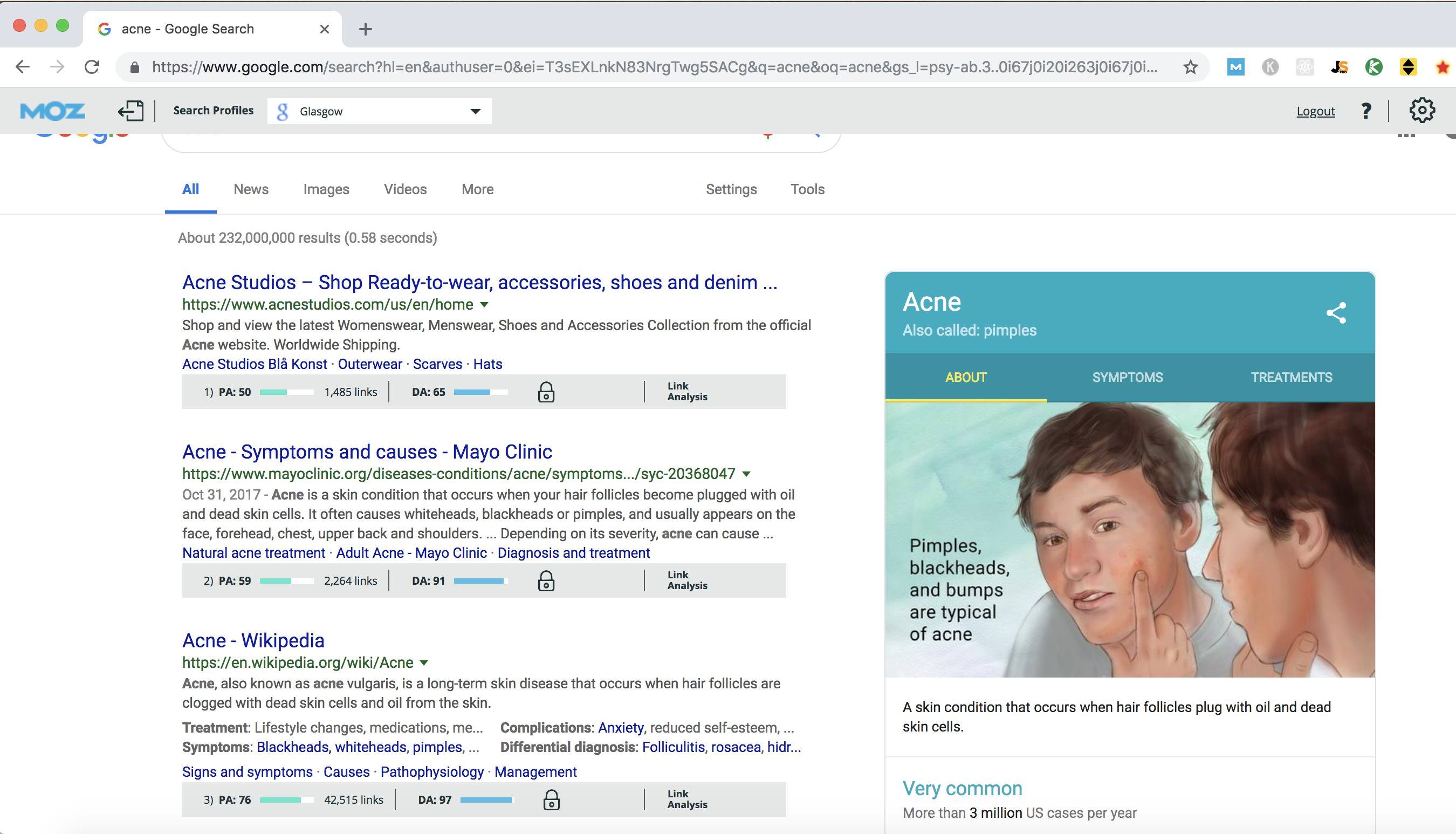
Firstly, keyword difficulty scores provided by these tools may be misleading, as your competitors may be using private blog network (PBN) links to boost their rankings. Secondly, these tools cannot perform accurate backlink profile analysis or show how strong a link profile actually is unless they analyze authority websites. Even the most experienced SEOs avoid fighting authority websites head-on unless their website or client's website is also an authority site.
Another issue is that some keywords may appear easy to rank for because your competitors may be blocking crawlers and hiding their PBN links from third-party crawlers such as Moz, Majestic, and Ahrefs. Therefore, it's essential to develop your intuition for analyzing competition instead of relying solely on keyword difficulty scores.
As an SEO, your goal should be to exploit niches that have not yet been tapped by other SEOs or are dominated by weak sites. If you find such a keyword, you've struck gold, and you'll be able to rank without spending a lot of money. This guide will show you how to properly analyze your SEO competition step by step, but first, you'll need some basic tools. All of these tools can be used for free with minimal restrictions, and you'll need Google Chrome to use most of them. If you don't already have Chrome installed, do so before proceeding further.
Here is the list of tools we'll be using in this guide.
Moz, Majestic, and Ahrefs are three popular SEO tools that are commonly used for keyword research and competitor analysis.
To use Moz for competitor analysis, you'll need to install the Mozbar plugin. If you're new to this, here's how you can do it:
- Go to https://moz.com and create a free account.
- After creating an account, visit https://moz.com/products/pro/seo-toolbar and download the Mozbar plugin for Chrome.
- Visit Google and search for anything.
- If the Mozbar appears on your screen, then you're good to go.

Another tool that we can use for competitor analysis is the Majestic Backlink Analyzer plugin. However, we'll only use it to obtain some metrics.
To get started, follow these steps:
- Go to https://majestic.com/majestic-widgets/plugins and download the Majestic Backlink Analyzer plugin for Chrome.
- Visit any website and click the Majestic logo on the top right corner.
- Authenticate using the free authentication option.
- If you see the Majestic metrics displayed on your screen, then you're ready to proceed.

To determine the difficulty of a keyword, we will use the following classification:
- Very Easy
- Easy
- Medium
- Hard
- Very Hard
To analyze our competition, we will consider the following factors:
- Keyword in URL
- Keyword in Title
- Keyword in Meta Description
- Backlink Profile
- Schema/Rich Cards
We'll begin with a "Very Easy" keyword example: "How to kill a cat." Please note that this keyword is used for example purposes only, and we have nothing against cats. The reason we chose this keyword is that it's unlikely that anyone would optimize their website for it.

Upon closer examination, the top search results do not appear to be optimized for our target keyword. There is no exact match in the URL, title, meta, or H1 tags. If you have a keyword that has similar competition but a reasonable search volume, it can be classified as a Very Easy difficulty keyword. It would be ideal to target such keywords if you wish to easily rank higher.
Another characteristic of such keywords is that they have unoptimized URLs for SEO, such as "http://www.website.com/blahblah.html?q=asdoa3231". If you come across numerous websites with similar URL structures and low on-page optimization, they can be considered Very Easy.
With minimal backlinking and basic on-page optimization, you should be able to rank for such keywords.
Now, let's talk about the 'Easy' keywords. These keywords have some on-page optimization and a weak backlink profile. This suggests that SEOs haven't yet exploited them, and the little optimization that exists is coincidental or done by bloggers who aren't well-versed in SEO but are using SEO plugins for their websites.
For instance, let's take the keyword "Dentist in San Marino."

Upon observation, it is apparent that the top search results feature websites with low authority and semi-optimized pages. The first result contains a partially matched keyword and LSI in the URL, as well as the Meta Description. However, the domains aren't particularly robust. This presents a favorable signal for us.
Now, let's delve further and scrutinize the first search result.

The initial observation to make is that the website lacks HTTPS, which is one of the ranking signals employed by Google. If you select the Page Analysis option located at the upper-right corner of the MozBar, you can view the on-page components of the webpage you are visiting.
Concerning on-page optimization, this website features the following:
- LSI keyword match in the URL
- LSI keyword match in the Title
- LSI keyword match in the Meta Description
- No match in H1 tag
- No match in alt tags
Our next course of action is to verify the markup.

The absence of markup on this website is advantageous for us as we can surpass its ranking by incorporating a straightforward schema.
Next, let's examine the website's backlink profile. Go to https://analytics.moz.com/pro/link-explorer and input the target URL.

Navigate downwards and select "Top links followed to this website".

It's apparent that this website predominantly acquires directory backlinks that can be readily replicated. Therefore, you can effortlessly compete with them.

Remember that it's impossible for any third-party crawler, regardless of whether it's paid or free, to display all of a website's backlinks. Hence, it's ideal to use multiple tools for analysis. To uncover more backlinks, we'll use Ahrefs' Free Backlink Checker.
Visit https://ahrefs.com/backlink-checker and input the target URL.

Proceed to verify the strength of the backlinks by following the same process. After that, move on to examining the Flow metrics of the site by accessing the target URL and selecting the Majestic button located on the upper right corner. It is advisable to aim for a 1:1 ratio between Trust Flow (TF) and Citation Flow (CF).

Upon reviewing the metrics of this site, many of you may feel alarmed, but no need to worry as we will delve into reverse engineering the issue shortly. First, let us go over some fundamentals.
The Majestic plugin exhibits TF and CF values for any URL visited, with three columns, including:
- URL
- Subdomain
- Root Domain
As previously mentioned, a desirable backlink profile generally maintains a TF:CF ratio close to 1:1. However, this proportion can occasionally be manipulated.
We will now reverse engineer their flow metrics. Begin by examining each backlink personly and selecting the Majestic plugin to review their flow metrics. Trust Flow only transfers to websites that have a backlink originating from a trustworthy page. I will provide an example to illustrate this concept.

When dealing with a URL, any pages that contain a backlink to this specific URL will receive its Trust Flow value of 4. In contrast, if it were the root domain, a Trust Flow of 15 would be distributed. This explains why homepage links are more robust, especially in PBNs.
To mimic your competitor's Trust Flow, obtain a backlink from this webpage and repeat the process for all backlinks. By doing so, you can collect adequate, filtered backlinks. Alternatively, you could purchase the paid version of Majestic for quicker results, but if you opt not to invest money, you'll need to spend your time and energy.
The manipulation of TF can be further demonstrated by these two websites. Hence, it would be best to use these metrics superficially and not rely solely on them for SEO purposes. Instead, trust your intuition.


The links provided may not be excellent as they might only attract inexperienced people, and high metrics don't necessarily equate to a direct correlation with PageRank.
Moving on to the 'Medium' difficulty keyword, the websites that rank in the top 10 for these types of keywords typically exhibit the following characteristics:
- They are authority sites with a domain authority of 75 or higher.
- They have robust on-page optimization accompanied by markup.
- They have a decent backlink profile.
- They are parasites.
Let us now examine an example of a 'Medium' difficulty keyword.

The term to focus on is "Brad Pitt workout." The top ten search results demonstrate strong on-page optimization or originate from semi-authoritative websites. To surpass these competitors, a significant investment is necessary. For beginners or those with less experience, I would caution against targeting such keywords.
Upon analyzing the primary website's backlink profile, I discovered a potent guest post. These backlinks carry substantial weight and are challenging to acquire. Moreover, this specific guest post generates some traffic, which presents an additional challenge. Nonetheless, it is possible to create superior links and shift the results in your favor, but you must consider your return on investment.

You can replicate the process for the search engine results pages (SERPs) to evaluate the keyword's level of difficulty and respond appropriately.
Next, it's appropriate to tackle the 'Hard' difficulty keywords. Such keywords are often dominated by authoritative websites, as well as a handful of sites boasting influential backlink profiles and strong on-page optimization.
For instance,

Ranking for these types of keywords is an arduous task. It requires a substantial number of high-quality backlinks to have any hope of surpassing the competition.
Let's examine the top search result.

The website occupying the top spot boasts some of the most potent backlinks that one can acquire. These links are contextual, receive high levels of traffic, and originate from authoritative sources. Competing with such backlinks is an immense challenge, unless you resort to a large number of private blog networks (PBNs). However, you must carefully consider your return on investment when using such strategies.
Lastly, let's shift our focus to the most challenging tier of keyword difficulty: the 'Very Hard' keywords.
Without further ado, let's take a closer look at an example.

Attachments

